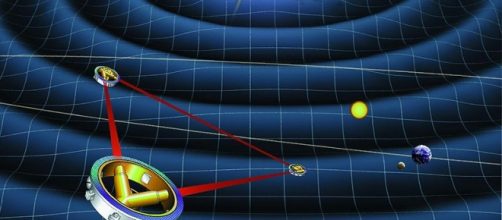Laser Interferometer Space Antenna (LISA) Pathfinder, a space mission managed by the European Space Agency in collaboration with NASA has satisfactorily tested an innovative technology intended to assemble a space-based observatory for detecting gravitational waves in space. These tiny ripples in space, which were predicted by Albert Einstein one hundred years ago, were first detected by LIGO a ground based observatory, one year ago.
What are gravitational waves?
This type of astronomical phenomena was predicted in Albert Einstein´s theory of general relativity in 1916.
Based on this view, gravitational waves are like ripples in a pond of water; however, these ripples form in space by the interactions of certain astronomical bodies, such as the collision of two black holes, neutron stars, and binary stars. The energy travels outward from its source as waves.
LISA
This project is focused in the development of a space-based gravitational wave detector sensitive in the frequencies of 0.03 MHz to 0.1 Hz. The spacecraft identifies gravitational wave tensions in space time by measuring the variations in separation between masses in three satellites placed 5 million km apart in space.
Laser Interferometer Gravitational Wave Observatory (LIGO)
Interferences, including seismic, temperature variations in the atmosphere, and varied noise sources, limited LIGO to identify gravitational waves higher than 100 hertz frequency.
For the detection of gravitational waves of 1 hertz or less such as those produced by the merging of super massive black holes in colliding galaxies, another type of technology, one that can only be attained in space, is required.
What can LISA study?
The spacecraftwill be able to detect gravitational waves from sources, including spiraling and merging massive black holes at a redshift of z=20; stellar compact bodies spiraling into the center of massive black holes with a redshift of z=1. Thousands of binaries within the Milky Way and a whole sky map of billions of other stellar bodies in the universe. It´s thought that the measurements, including mass, spin, and luminosity, will be recorded with the highest never before attained precision.
Conclusion
The detection of gravitational waves will provide ample information about the formation of black holes and their host galaxies, the structure and formation of stellar populations, new insights into the nuclei of astronomical bodies, such as neutron stars.

